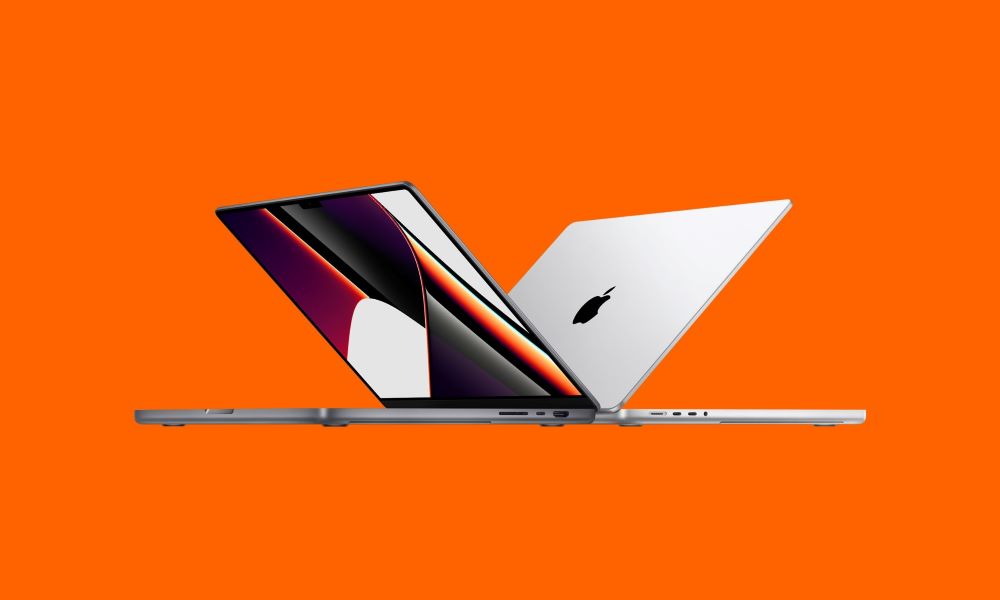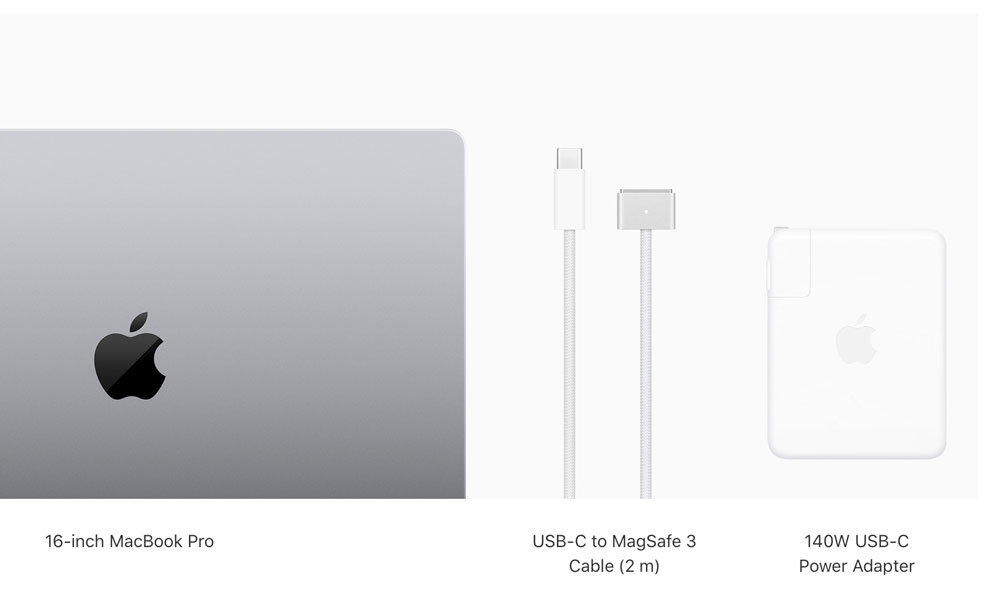MacBook Pro’s MagSafe Connector Makes a Comeback | How Does It Work?
 Credit: Apple
Credit: Apple
Toggle Dark Mode
Even though the rumour mill already predicted its return, one of the smaller but more interesting things about Apple’s newest MacBook Pro lineup isn’t even a new feature, but rather the return of an old favourite.
If you joined the MacBook family in recent years, you’ve probably become accustomed to Apple’s minimalist laptop design that featured only a few USB-C ports, but this wasn’t always so. Before Apple began its journey down this austere road with the 12-inch MacBook back in 2015, its MacBooks Pro was actually teeming with ports, featuring everything from USB and HDMI to SD card slots and more.
Among these was the trusty MagSafe connector that had been the staple of powering every MacBook made since the Intel-based lineup was first introduced back in 2006. While MagSafe went through a couple of changes over the years, most notably evolving into a thinner “MagSafe 2” connector in 2012 to match the lower-profile MacBooks of the day, for almost ten years, it was the only way to charge a MacBook.
Sadly, as Apple moved toward USB-C ports, which could also be used for charging, somewhere along the way, it decided that the trusty MagSafe connecter would no longer be required.
As a result, it gradually disappeared with the 2016 MacBook Pro and then put to its final rest in 2018 when the new Retina MacBook Air lineup was introduced in 2018.
For all intents and purposes, that seemed to be it for MagSafe on the MacBook, especially when Apple co-opted the MagSafe branding to refer to its new iPhone 12 charging system in late 2020. After all, it was already confusing enough that “MagSafe” meant something different from before, but at least that other MagSafe connector was in the distant past.
Perhaps not, however, as rumours began to appear earlier this year that Apple’s 2021 MacBook Pro lineup would indeed see the return of the MagSafe connector in at least some form, and this week we saw that come to fruition during the announcement of the 14-inch and 16-inch MacBook Pro lineup with a new “MagSafe 3” connector.
Why MagSafe?
When Apple put MagSafe 2 to rest a few years ago, it really wasn’t first on the list of ports that users missed on their MacBooks. Looking at it solely from a charging perspective, USB-C worked just as well. Plus, this opened the door to using third-party USB-C chargers, which could be obtained far more affordably than Apple’s premium MagSafe power adapters.
In fact, back then, the only real advantage of MagSafe was how easily the connector attached and detached from the MacBook. In fact, this was Apple’s original selling point for the technology, which came from an idea that was big in Japan among countertop cooking appliances like deep fryers.
As Apple touted back in 2006, the idea was that somebody tripping over your MacBook power cable wouldn’t send your expensive laptop crashing to the floor. Instead, the connector itself would just easily pop off its magnetic attachment, leaving the MacBook undisturbed.
However, the battery life on Apple’s MacBooks improved, it became less necessary to run them plugged in all the time. Third-party accessory makers quickly jumped in with adapters for those who wanted a MagSafe-like connection to their modern MacBook USB-C ports.
The second-generation “MagSafe 2” connector that debuted in 2012 also wasn’t without its problems. Apple actually weakened the magnets slightly in that version, likely to accommodate its lighter-weight MacBook Air.
Unfortunately, this meant that many users found the MagSafe connector would frequently come off a bit too easily. It was a hassle on soft surfaces, and there were even some reports of users breaking their MacBook screens when the connector slipped up on top of the MacBook unibody just as they were closing the lid.
Enter MagSafe 3
This year’s high-end MacBook Pros see the return of a multitude of ports aimed at letting actual professionals do their thing without a pocketful of dongles, and among these comes the return of the trusty MagSafe connector in a new and improved version.
Apple claims it’s improved the magnetic connection on this one, so it shouldn’t come off nearly as easily, and that’s probably fair considering that even the smaller and lightest 14-inch MacBook Pro weighs in at 3.5 pounds. So it’s going to take a lot more force to pull that off a table than it would for a 2.8-pound MacBook Air. The rubber feet on the new MacBooks Pro also appear to be more formidable, which will likely help it stay in place as well.
Perhaps the biggest reason for the return of MagSafe, however, was simply to allow Apple to chart its own course when it comes to powering its new MacBooks.
For the first time, Apple promises Fast Charging capabilities on the high-end MacBook Pro, and this is no small feat considering that the 16-inch model packs in a 100Wh battery. That’s about six times larger than the battery in the iPhone 13 Pro Max and double the battery capacity of the M1 MacBook Air.
Despite this behemoth, Apple still says you’ll be able to charge it from dead to 50% in about 30 minutes. That’s a feat that requires a lot of juice, however, and it turns out that it’s beyond the capabilities of the current Thunderbolt 4 and USB-C ports.
While it appears that the 14-inch MacBook Pro can manage these fast-charging speeds with a properly compliant 96W USB-C Power Adapter, for the 16-inch MacBook Pro, Apple had to create its own 140W adapter that can deliver these speeds only over the MagSafe 3 port.
To be fair, Apple’s new adapter is standards-compliant. It supports the new USB-C PD 3.1 standard, but that was ratified only a few months ago, and clearly, Apple isn’t willing to wait for Intel to catch up with a new Thunderbolt standard.
The Thunderbolt 4 / USB-C ports in the new MacBook Pro can’t take in any more than 100W of power, so for Apple to pull in the 140W that the 16-inch MacBook Pro needs, it had to go with its own power connector. If it’s going to do that, it might as well go back to its tried-and-true MagSafe technology.
To be clear, Apple’s new MacBooks Pro still charges over USB-C just like every other model, so you only need to use the MagSafe 3 port on the 16-inch MacBook Pro if you want to get the fastest possible charging speeds.
In the case of the 14-inch MacBook Pro, there’s appears to be no electrical benefit to using the MagSafe 3 port at all. Of course, you gain the physical advantages of the magnetic connector and free up a USB-C port to use for something else. Once Apple returned to the MagSafe port on the 16-inch MacBook Pro, it would have been weird to exclude it from the 14-inch.
It’s fair to say that MagSafe 3 will now be the way forward for Apple, at least in its higher-end MacBooks, as it removes the shackles of adhering to USB and Thunderbolt standards for charging. However, what remains to be seen is if Apple plans to adopt MagSafe 3 across its entire MacBook lineup, right down to the entry-level MacBook Air, or if this is something that’s going to be reserved for “Pro” machines.








